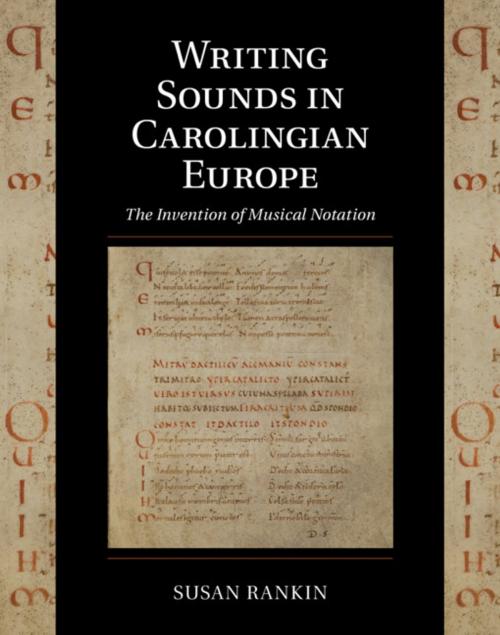Writing Sounds in Carolingian Europe
The Invention of Musical Notation
Nonfiction, Entertainment, Music, Fiction & Literature, Literary Theory & Criticism, History| Author: | Susan Rankin | ISBN: | 9781108381789 |
| Publisher: | Cambridge University Press | Publication: | October 31, 2018 |
| Imprint: | Cambridge University Press | Language: | English |
| Author: | Susan Rankin |
| ISBN: | 9781108381789 |
| Publisher: | Cambridge University Press |
| Publication: | October 31, 2018 |
| Imprint: | Cambridge University Press |
| Language: | English |
Musical notation has not always existed: in the West, musical traditions have often depended on transmission from mouth to ear, and ear to mouth. Although the Ancient Greeks had a form of musical notation, it was not passed on to the medieval Latin West. This comprehensive study investigates the breadth of use of musical notation in Carolingian Europe, including many examples previously unknown in studies of notation, to deliver a crucial foundational model for the understanding of later Western notations. An overview of the study of neumatic notations from the French monastic scholar Dom Jean Mabillon (1632–1707) up to the present day precedes an examination of the function and potential of writing in support of a musical practice which continued to depend on trained memory. Later chapters examine passages of notation to reveal those ways in which scripts were shaped by contemporary rationalizations of musical sound. Finally, the new scripts are situated in the cultural and social contexts in which they emerged.
Musical notation has not always existed: in the West, musical traditions have often depended on transmission from mouth to ear, and ear to mouth. Although the Ancient Greeks had a form of musical notation, it was not passed on to the medieval Latin West. This comprehensive study investigates the breadth of use of musical notation in Carolingian Europe, including many examples previously unknown in studies of notation, to deliver a crucial foundational model for the understanding of later Western notations. An overview of the study of neumatic notations from the French monastic scholar Dom Jean Mabillon (1632–1707) up to the present day precedes an examination of the function and potential of writing in support of a musical practice which continued to depend on trained memory. Later chapters examine passages of notation to reveal those ways in which scripts were shaped by contemporary rationalizations of musical sound. Finally, the new scripts are situated in the cultural and social contexts in which they emerged.















